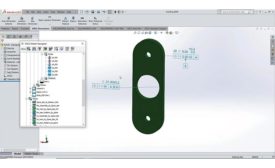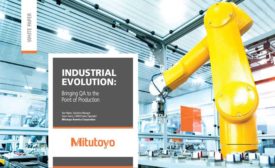Home » Geometric Dimensioning and Tolerancing (GD&T)
Articles Tagged with ''Geometric Dimensioning and Tolerancing (GD&T)''
From the Editor | Darryl Seland
Measurement
Turning GD&T From Grim, Depressing & Troublesome Into Something Grand, Delightful & Tantalizing
For the sake of industries around the world, it is time to make GD&T much easier to use, and much easier to use correctly.
February 1, 2022
GD&T’s New Rule and What it means for Measurement
Here we will explore the implications of rule "S" and the limits/requirements of today's metrology as it is applied to these GD&T requirements.
May 6, 2021
Not All that is Green is Good
There are methods to hide bad product under green numbers.
December 1, 2020
Inspection Software Evolving to All-In-One QMS Solutions for Practical Data Management
Data-driven manufacturing is here.
September 29, 2020
Manufacturing Medical
Medical devices warrant high levels of traceability in order to obtain, track and analyze data.
March 2, 2020
Sponsored Content
Industrial Evolution: Bringing QA to the Point of Production
January 29, 2020
Stay in the know with Quality’s comprehensive coverage of
the manufacturing and metrology industries.
eNewsletter | Website | eMagazine
JOIN TODAY!Copyright ©2025. All Rights Reserved BNP Media.
Design, CMS, Hosting & Web Development :: ePublishing












